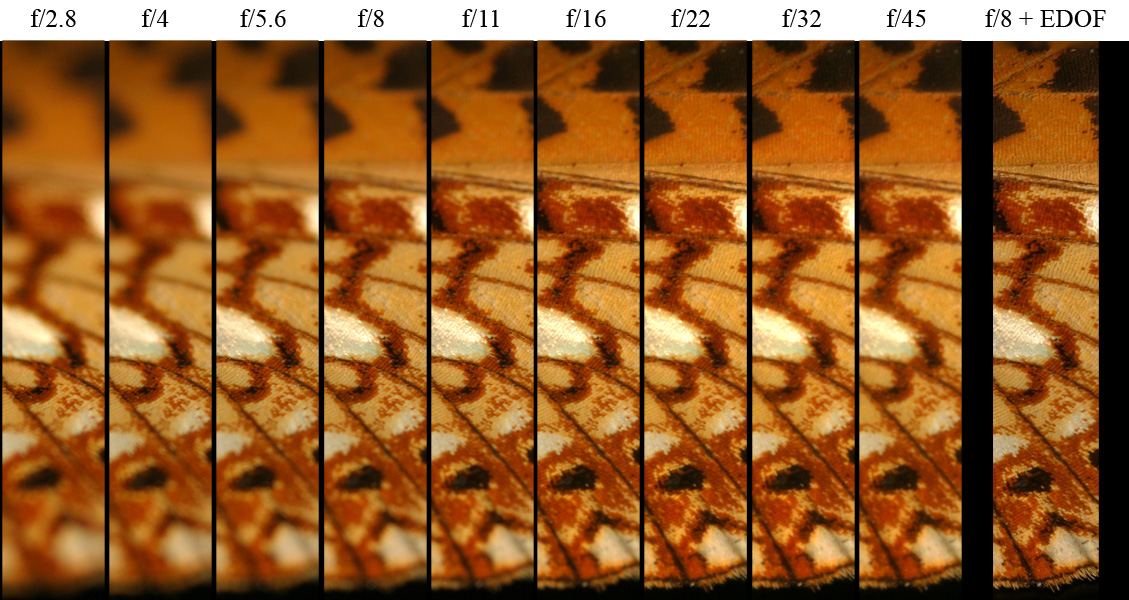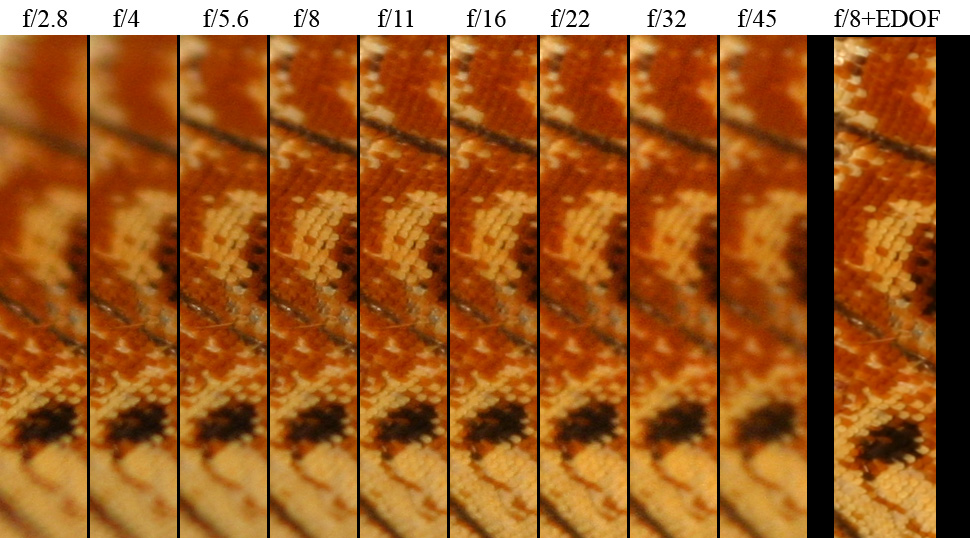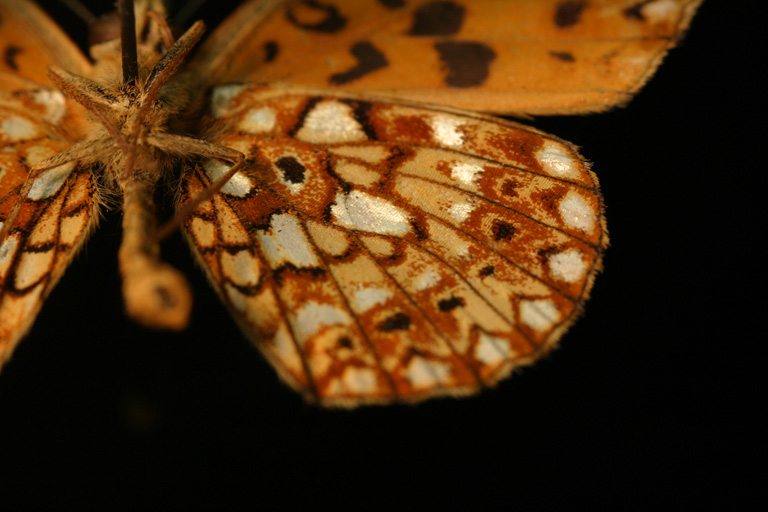

Rik Littlefield (email
rj.littlefield at computer.org)
Page written May 11, 2005,
Revised August 19, 2005,
Last minor edit April 25, 2009.
 Shown
below are typical results, obtained with a Sigma 105 mm f/2.8
macro lens at 1:1, on a Canon Digital Rebel camera (22.7 x 15.1 mm
sensor size). The subject
is a Small Pearl-bordered Fritillary (Boloria
selene), tipped at roughly 45
degrees to the optical axis. A single full frame is shown at
right; crops showing more detail appear in the series below.
Shown
below are typical results, obtained with a Sigma 105 mm f/2.8
macro lens at 1:1, on a Canon Digital Rebel camera (22.7 x 15.1 mm
sensor size). The subject
is a Small Pearl-bordered Fritillary (Boloria
selene), tipped at roughly 45
degrees to the optical axis. A single full frame is shown at
right; crops showing more detail appear in the series below.

To the best of my knowledge, the earliest solid technical discussion of this topic is a June 1960 article by H. Lou Gibson, "Magnification and Depth of Detail in Photomacrography" (J. Phot. Scty. Amer., 26, 34-46). It includes a detailed mathematical analysis. An extended and much more approachable discussion can be found in the venerable Kodak Technical Publication N-12B, "Photomacrography", copyright 1969, now out of print but still commonly available through used book sellers. In Kodak's N-12B, Figure II-82 provides "A photographic demonstration of depth of detail ... [using] a butterfly wing tilted away from the camera at 45 degrees". That figure served as the model for the illustrations appearing in this web page.
The work presented here is a personal publication of capabilities and techniques developed by the author. You may link to this page, but please do not reference in archival publications; contact the author instead. All images and text are copyright Rik Littlefield, 2005-2009.